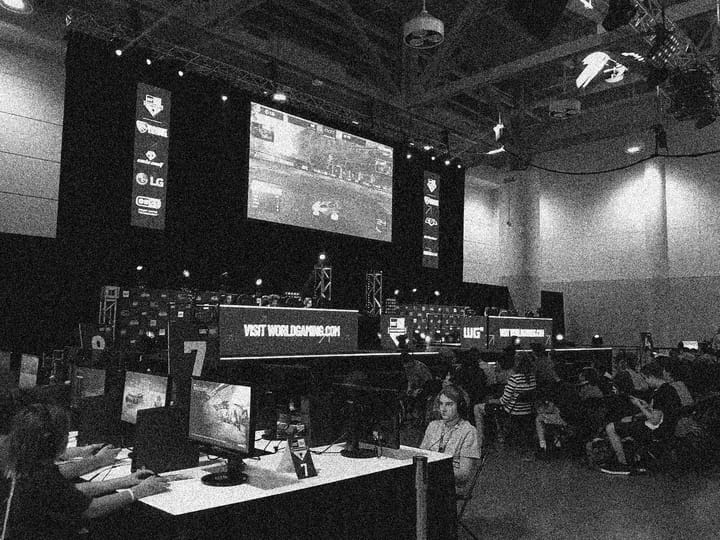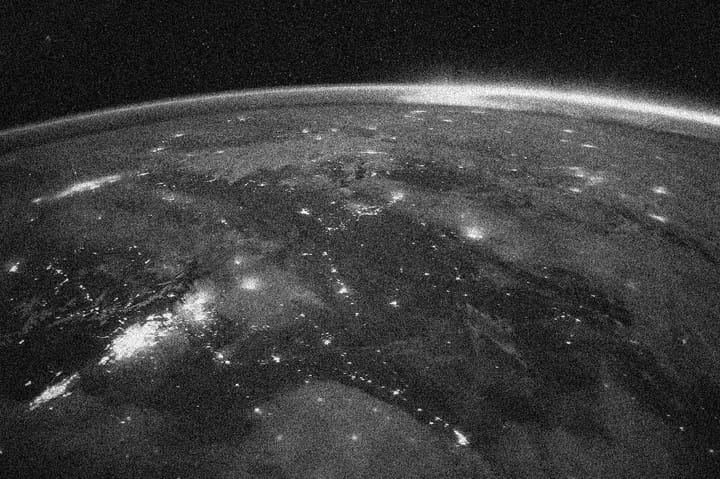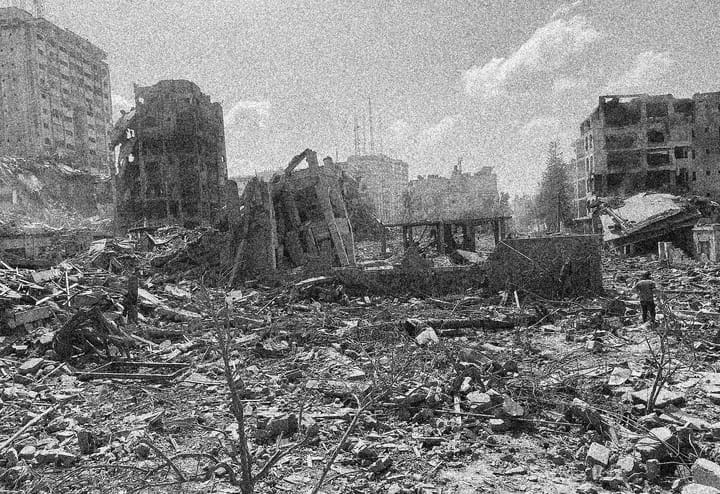How US Foreign Policy in the Vietnam War led to the My Lai Massacre
The infamous massacre has been wrongly psychologized, when it was in fact a direct result of Washington’s resolve to force the Vietcong into submission through excessive force.

In the morning hours of March 16, 1968, a group of American soldiers from Task Force Barker entered the South Vietnamese fishing hamlet of My Lai looking for Vietcong. By the end of the day, they had murdered between 347 and 504 unarmed civilians, committing one of the worst war crimes in US history.
Although the perpetrators tried to cover up their tracks, news of the event—now known as the My Lai Massacre—quickly went public. In an interview with NBC the following year, rifleman Varnado Simpson recalled gunning down a woman. “I went to turn her over, and there was a little baby with her that I had also killed,” he confessed. “The baby’s face was half gone. My mind just went. The training came to me, and I just started killing. Old men, women, children, water buffaloes, everything. We were told to leave nothing standing.”
In the decades following the Vietnam War, discourse surrounding the conflict—from media coverage to popular films like The Deer Hunter and Apocalypse Now—promoted the notion that events like the My Lai Massacre were unfortunate accidents: the unintentional result of traumatized, hypervigilant GIs losing control of their trigger fingers after spending months in the jungle, hounded by an invisible, seemingly omnipresent enemy while being misled by their incompetent chain of command. In truth, the massacre was the expected and indeed logical outcome of top-down policies that sought to force Vietnamese communists into submission not through territorial gains, but intimidation and excessive violence.
Revisiting the events at My Lai, which continue to be misinterpreted even today, is not only relevant to the study of the Vietnam War and its divisive legacy. It’s also crucial to understanding more modern American wars waged according to the same principles
Many perpetrators blamed their actions on bad intel. According to interview transcripts collected by General William Peers, whose 1970 internal investigation of the massacre is available online, the soldiers of Task Force Barker were told that the village wasn’t really a village, but rather a secret Vietcong stronghold surrounded by trenches and stocked with weaponry. They were also told that there would be no civilians there if they attacked after 7 AM, because they would all be at the market at that time. When they entered My Lai around 8 AM, they were allegedly acting under the belief that everyone they would encounter there was hostile.
“It's all extraordinarily fishy,” says historian Marshall Poe, author of The Reality of the My Lai Massacre and the Myth of the Vietnam War, and yet the soldiers weren’t entirely wrong. In his book, published in 2023, he argues the very nature of the Vietnam War made it almost impossible for the US army to distinguish between Vietcong and non-Vietcong, between friend, foe, and innocent bystander.
“The authorities told the soldiers they were going to find the bad guys and leave the good guys alone,” he explained over Zoom. “That’s not what happened. What happened was: we invaded, and the people whose country we invaded universally saw us as the enemy, regardless of their affiliations. From their perspective, the Americans were occupiers, just like the Nazis were occupiers of France and Poland. The Americans, for their part, viewed all Vietnamese with equal suspicion, women, children, and old men included. And this caused them to act very risk-averse. Put simply, they were going to shoot first and ask questions later. They weren’t going to take their chances.”
Poe points to the transcripts, which he studied extensively in preparation for his book. “When investigators asked the soldiers why they had killed civilians, the soldiers frequently responded: ‘What do you mean civilians? They weren’t civilians. They were hostile to us. They didn’t want us there and they were dangerous to us.’”
Historian and activist Jonathan Neale, author of A People’s History of the Vietnam War, largely blames the My Lai Massacre on US military command, whose orders—according to marine lieutenant Philip Caputo, who landed in Danang in 1965—were “not to win terrain or seize positions, but simply to kill: to kill Communists and to kill as many of them as possible.” “The pressure for this was relentless,” writes Neale. “The Pentagon demanded statistics [and] officers knew their careers would depend on numbers.”
“Competition for rank in Vietnam was fierce,” adds Poe, “and the best way to get a better rank was to get a good result.” Frank Barker, the commander of Task Force Barker, was desperate for a promotion. His squadron hadn’t taken down any Vietcong for a while, turning them into a laughing stock. Then, miraculously, the intel about My Lai came in.
More generally, the entire military structure was rearranged so as to heighten the risk of casualties. Unlike during previous wars, soldiers in Vietnam mostly served one-year tours—a decision Washington claimed to have made in the interest of its conscripts, but which Neale identifies as a political maneuver. Families at home were less likely to oppose the war if their sons and fathers returned before the holidays, while soldiers were in and out of Vietnam before they had sufficient time to question what they were doing there.
Fresh recruits were conditioned by seasoned ones. “They had me moving dead bodies, VC and NVA [North Vietnamese Army],” one marine stationed at Khe Sanh recalled. “Push this body over here out of the way. Flip a body over. See people’s guts and heads half blown up. I was throwing up all over the place.” When he asked his superior why he needed to do this, the latter responded: “You’re going to get used to death before you get in a firefight and get us all killed.” He then ordered him to “kick one dead body in the side of the head until part of his brain started coming out the other side.”
Desensitization to violence went hand in hand with the dehumanization of Vietnamese people. “Back then we didn’t give a shit about the dead Vietnamese,” a veteran named John Hendricks said in 1985. “It was like: ‘Hey, they’re just gooks, don’t mean nothin’.’ You got so cold you couldn’t even blink. You could even joke about it, mess around with the bodies like they were ragdolls. After a while we could even stack up our own KIAs [killed in action] without feeling much of anything.” At the War Remnants Museum in Ho Chi Minh City, a particularly striking photograph shows a GI holding what’s left of a Vietcong after an airstrike, a smile on his face.
Though the My Lai Massacre was a product of the culture of violence bred by US foreign policy, popular culture pictures the incident as a logical albeit horrific response to the extreme pressure American GIs experienced fighting the Vietcong. Poe believes this misinterpretation of events does not stem from government propaganda: the aforementioned Peers report, commissioned by the Pentagon, rightly placed the blame on military and political leadership. Instead, Poe argues that it stemmed from anti-war activism, which, once news reports of the Massacre began appearing on US television, used it as an example of the psychological damage that American soldiers were sustaining abroad and, by extension, an argument for why the war should end. Emotional interviews with veterans who were haunted by shame and regret of their time in Asia helped convince the public that war wasn’t just destroying the Vietnamese, but Americans as well.
The problem, argues Poe, is that many of these interviews were either exaggerated or fabricated in service of the antiwar agenda which, in an effort to stop the fighting, made it seem as though events like My Lai were more common than they actually were. “The massacre was a gift to the antiwar left,” he argues. “When news broke out, activists began speaking of Vietnam as a kind of My Lai writ large, even though this wasn’t the case.”
Anti-war discourse, spearheaded by activists like Robert Jay Lifton, also made it seem as though psychological damage sustained through the Vietnam War in the form of post-traumatic stress disorder (PTSD), which entered the DSM (the standard psychiatric manual) in 1980, was much more common among Vietnam veterans than it actually was. “If you look at the data, Vietnam veterans integrated back into society very successfully,” Poe attests, “more so than veterans of the Korean War and other conflicts.”
When PTSD entered the DSM, Hollywood produced films that explored how the condition affected veterans on an individual level. “He is sick and he is battled and his mind has been destroyed by the war, and he comes back and he does bad things and acts inappropriately. Rambo is a classic example of this. But there are lots of others. Look at Taxi Driver. Is it any coincidence that Robert De Niro’s character, Travis Bickle, is a veteran?”
Not only is this emphasis on PTSD misguided, but it also distracts from rectifying the underlying issue: warmongering statesmanship, which sadly has changed little since 1968. Washington has continued to fight wars of occupation in Iraq, Afghanistan, and other countries, placing their soldiers in situations where events similar to My Lai were allowed to unfold, from the torture and execution of unarmed Afghan prisoners in the Bagram Theater Internment Facility in 2002, to the physical and sexual abuse of detainees in the Abu Ghraib prison in Iraq in 2004.
Although these war crimes were likewise blamed on individual perpetrators, locked in the psychological torture chamber of conflict, when they were covered in the media, the history of the My Lai Massacre shows that true responsibility lies with the military and foreign policy machinery that makes such crimes possible in the first place.
“My Lai has had no significant impact on American policymaking as far as I can tell,” Poe concludes. “We have drawn the wrong lesson from it. The right lesson is: don’t invade other countries. Don’t fight a war of occupation because you’re going to end up with massacres like this every time.”
■
Tim Brinkhof is a Dutch journalist based in Atlanta. He studied modern history at New York University and has written about history and politics for Big Think, JSTOR Daily, Smithsonian Magazine, New Lines Magazine, Jacobin and more.



